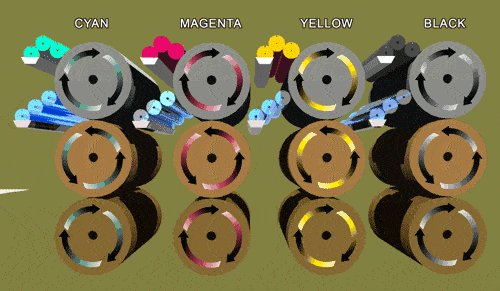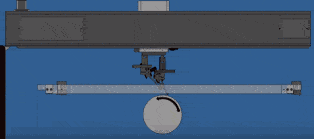Various printing types 1
lithography
Since the graphic part and the non-graphic part on lithographic printing are on the same plane, during printing, in order to make the ink distinguish the pattern part or the non-pattern part of the printing plate, the principle of oil-water separation is used. The water supply device supplies water to the non-graphic part of the printing plate, thereby protecting the non-graphic part of the printing plate from being wetted by ink.
Then, ink is supplied to the printing plate by the ink supply device of the printing part. Since the non-graphic part of the printing plate is protected by water, the ink can only be supplied to the graphic part of the printing plate.
Finally, the ink on the printing plate is transferred to the milk skin, and then the pressure between the rubber roller and the impression cylinder is used to transfer the ink on the milk skin to the substrate to complete one printing. Therefore, lithography is a kind of indirect printing.


Pad printing is one of the special printing methods.
The pad printing process is very simple, using steel (or copper, thermoplastic) gravure, using a curved pad printing head made of silicone rubber material, dipping the ink on the gravure onto the surface of the pad printing head, and then to the surface of the desired object Press it to print text, patterns, etc.
For example, the text and patterns on the surface of mobile phones are printed in this way, and the surface printing of many electronic products such as computer keyboards, instruments, and meters are all done by pad printing.

Curved printing
Curved printing is to first put the ink into the engraved text or pattern gravure, then copy the text or pattern to the curved surface, and then use the curved surface to transfer the text or pattern to the surface of the molded product, and finally make it through heat treatment or ultraviolet light irradiation and other methods. The ink cures.





